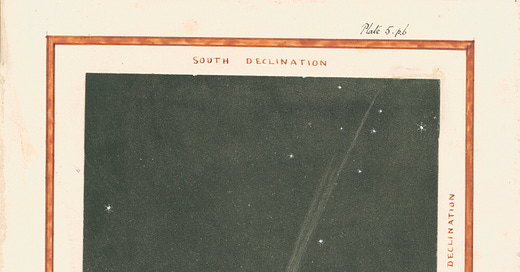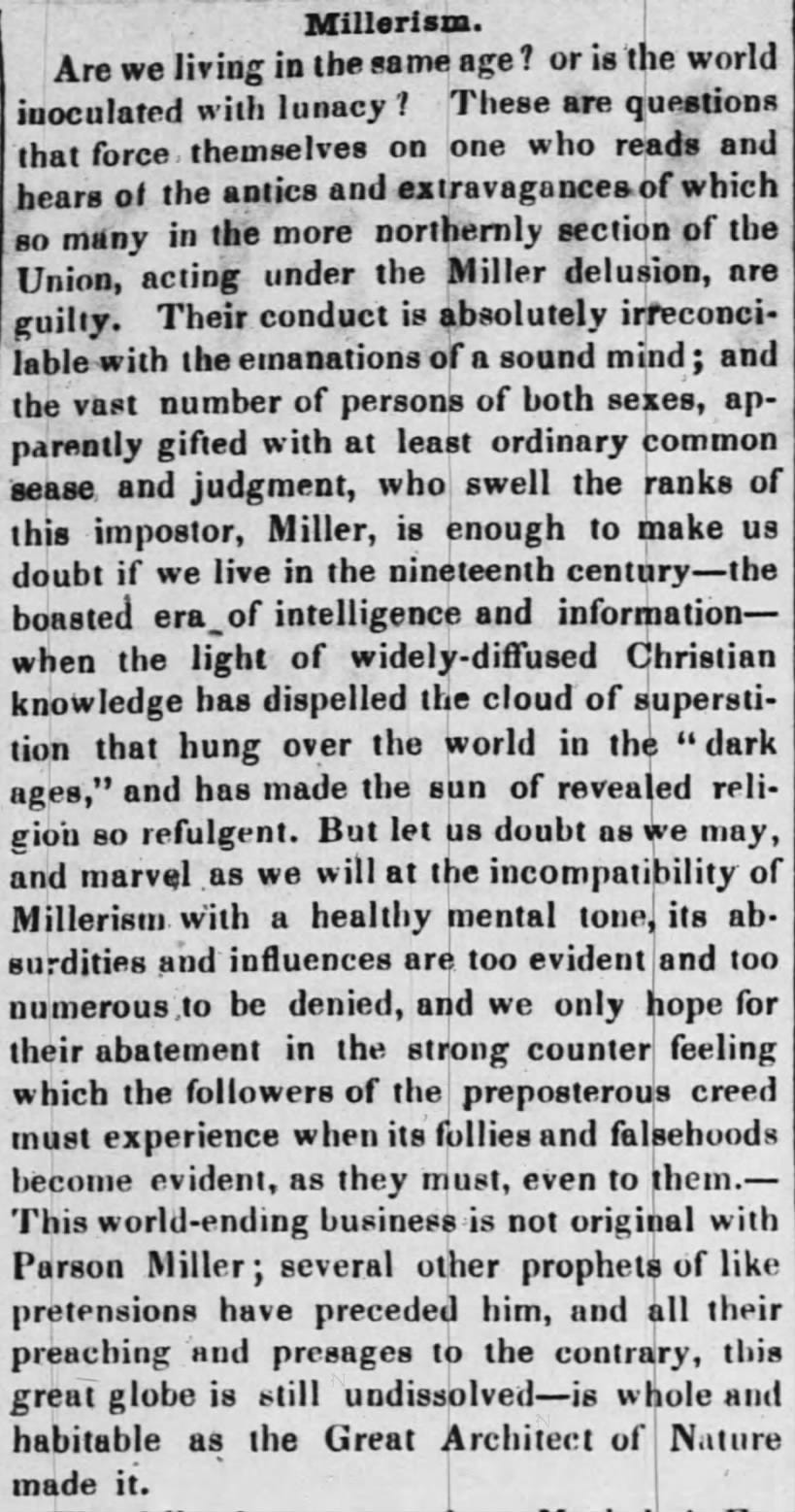Augustin Verot (1805-1876), born in France, became the first bishop of Florida (1857-1870) and Savannah (1861-1870). He is often referred to as the “Rebel Bishop” due to his sympathies for the southern states during the Civil War - I’ll share some of those stories in the future, but today a look at his response to “Millerism” and the Great Comet of 1843.
The Great Comet
“Shortly after the beginning of March 1843 it began emerging into the evening sky during dusk, and its elongation rapidly increased as it passed closest to Earth on March 6, and afterwards. It was a bright object, perhaps around 1st magnitude, when it first appeared, and although it faded as it receded from perihelion, it maintained its brightness rather well, and remained a conspicuous naked-eye object throughout March. The main distinctive feature, meanwhile, of the Great Comet of 1843 was its long, straight, bright dust tail, visible throughout the entire month. Although the comet was still a conspicuous object at the end of March, it apparently faded rapidly thereafter. It appears to have dropped below naked-eye visibility just after the first few days of April, and the final observation was reported on April 19.”1
Millerism
William Miller, a New England farmer and religious leader began preaching in 1831 that the end of the world as we know it would occur with the second coming of Jesus Christ between March 21, 1843, and March 21, 1844.2
Miller’s followers, estimated to be as many as 100,000, believed that they would be carried off to heaven when the date arrived.
The appearance of the comet generated much excitement among Millerites who gathered on housetops and mountainsides on the dawn of the predicted day wearing “ascension” robes. When the day passed without the world ending, Miller then predicted the end would come in 1844.
Father Verot’s Response
Verot, then 38, had become a priest in the Society of St. Sulpice and was teaching science, philosophy, and theology at St. Mary’s College in Baltimore, when he wrote:
“All are aware that a certain Mr. Miller, assuming the prophetical trumpet, has threatened the world with a speedy destruction, and has specified the year and the month of that fearful event, about which no one knows, neither man nor angel. One would not have supposed that in this, so called, enlightened age, people would be credulous and stultified enough to give the least credit to those wild dreams; and indeed, it was but a just subject of mirth to hear that some deluded people were driven away by cold from the ascension ground, where they were provided with their ascension robes: but the farce has of late assumed an alarming aspect, on hearing that some deluded victims have lost totally that reason, which they had partially surrendered at the voice of the prophet, and that others have hurried themselves into the real day, for fear of the imaginary one. We heard from a private correspondent that the prophet read from the pulpit a letter in which the Pope was made to recant his former superstitions and enroll himself as a follower of Miller: an excellent counterpart to this would be a letter of Christ from heaven - via the Moon.”3
Many of Miller’s followers found themselves in insane asylums.
rockstem.org
Franklin Repository and Chambersburg Whig, March 9, 1843, 2.
The Comet: A Tract for the Times (Baltimore: Murphy & Co., 1843).






1805-1976? Really? He lived to be 171 years old?